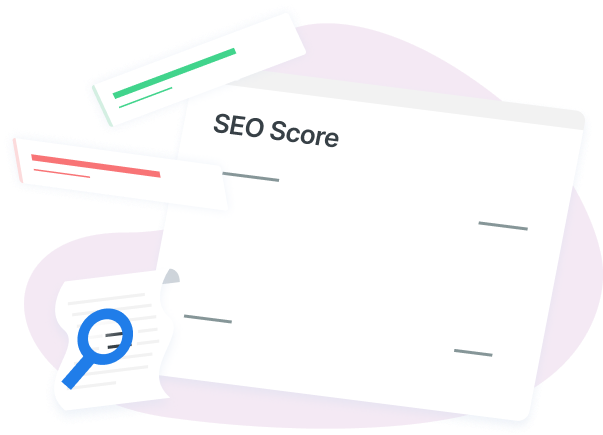How to Measure On and Off Site SEO
It’s critical to the online success of any company in any industry, and it has the potential to drastically improve your bottom line over time.
But just because you have an SEO strategy doesn’t mean that it’s helping you. In fact, if you don’t measure the results of your strategy, you could be losing out on hundreds (or thousands) of dollars each day!
To make sure that doesn’t happen to your company, it’s important to monitor the results of your SEO strategy.
The best way to do that is to look at the two major sections of SEO — on- and off-site key performance indicators (KPIs).
This handful of metrics (all of which are in Google Analytics) will help you clearly see which strategies help your company grow and which ones have yet to earn back your initial investments. If you want to learn more, keep reading, and contact us at 888-601-5359!
Want to get more from your online presence?
On-Site KPIs
There are hundreds of different metrics you can use to evaluate your SEO strategy. The key is narrowing those metrics down to the few that indicate your success.
These may vary based on your SEO goals and industry, but for the most part, you should be able to use the following KPIs to see whether you’re achieving the results you want.
KPI #1: Sessions
Sessions indicate how many times someone has come to your site to browse. It is not a measure of how many pages someone has viewed on your site (those are called “page views”).
Monitoring sessions is a great way to see how many opportunities you have each month to convert visitors on your site into new customers.
It’s also a good way to gauge the effectiveness of your Internet marketing strategy in general. After all, the first step to getting new customers is attracting them to your site!
KPI #2: Average Time on Page
Average time on page relates to how much time your potential customers spend on your website on average.
This KPI tells you how engaged people are with your site and if they think your pages are valuable to them. A longer time means people read a healthy portion of your online content, and the more they read, the more opportunities you have to turn them into customers.
KPI #3: Page views (by page)
The page views metric covers how many people go to a specific page on your site over a certain period of time.
This is important because it tells you how important certain pages are to your website’s overall performance. Then, with that in mind, you can create more pages about similar topics to attract an even larger audience.
For example, let’s say you run an online shoe store, and you had one page about how to determine your shoe size and another about the importance of arch support.
The first page got 1000 views in a month, and the second had 100. While both pages are good for your site, the first page is performing better. You can double down on that topic by creating other pages about how shoe sizes translate to inches, how the right shoe size can keep your feet healthy, and other possibilities.
KPI #4: Conversions
Last, conversions are probably the most important metric to your on-site SEO strategy. These are the total number of people who complete a desired action on your site that either turns them into a paying customer or brings them one step closer to becoming a customer.
Conversions are critical to measuring your SEO success because if you don’t have any, then your website isn’t helping your business.
In order to actually help your bottom line and generate an ROI, you need site visitors to convert.
The first step of measuring conversions is to set up goals on your site and enter them into Google Analytics. That way, Google Analytics can track how many people do what you want them to do.
Then, you use other online strategies (like calls to action) to encourage users to convert, resulting in actual conversions.
Your conversion rate probably won’t look that high compared to your overall traffic — maybe 0.2% to 0.5% on each page — but if you’re attracting enough visitors, even a small percentage can mean significant revenue.
Off-Site KPIs
Off-site KPIs are a little harder to measure than on-site.
Off-site factors play a huge role in your company’s overall SEO strength, but since they’re not on your site, you can’t track them with Google Analytics. Instead, you can use a third-party analytics source like Open Site Explorer.
CHECK YOUR OFF-SITE KPIS INSTANTLY
There are two big off-site KPIs that you should monitor in SEO.
KPI #1: Quality of links
External links are perhaps the most important SEO ranking factor in the world. They tell search engines like Google that other site owners trust your content, and they act like votes in favor of your site.
However, they’re only valuable if they’re from quality sources that Google already trusts, like reputable news sources or major publications in your industry.
Those high-quality links tell Google that you’re creating smart, worthwhile content that can help their users. As a result, they’ll give you an extra boost in search engine results pages (SERPs) so you can show above your competition.
As a result, you’ll get more clicks when your site shows up in SERPs, which leads to more sessions and more conversions!
KPI #2: Quantity of links
After the quality of your links, search engines also look at the quantity of links that you’ve assembled.
While this isn’t nearly as important as the quality, it still matters in terms of how many good links you have.
If you have lots of links from high-quality sources, Google will reward you with improved rankings in SERPs.
If you have lots of links from low-quality sources, Google may actually penalize you since your link profile (or collection of links from other sites) looks disreputable.
And if you only have a few links from high-quality sources, Google may give you a slight boost in SERPs, but not enough to make a huge difference to your bottom line.
With these two major KPIs, you can easily quantify the effectiveness of your company’s SEO strategy!
WebFX knows SEO
At WebFX, we have an experienced team of SEO experts who know exactly how to make sure your Internet marketing strategy is working. We’ve helped hundreds of clients achieve the results they want, and we’re happy to do the same for you!
Contact us today to craft an SEO strategy that’s unique to your business!
Related Resources
- Four SEO Metrics That Will Waste Your Time
- How Long Does It Take to See SEO Results?
- How SEO Benchmarks Help You Win the Search Rankings Marathon
- How to Measure Schema Performance for Your Website Pages
- How to Measure Your SEO Success
- How to Show SEO Value to Your Bosses
- Rank Tracking: Why Should You Track Rankings?
- SEO Analytics Guide: Learn How to Create Your First SEO Analytics Report
- SEO KPIs: the 6 Best Metrics for Your Business to Track
- Four SEO Metrics That Will Waste Your Time
Marketing Tips for Niche Industries
- How Technical Schools Can Reach Students with SEO
- How to Build Links for Your Ecommerce Business
- How to Build Links for Your Hotel Website
- How to Increase Higher Education Enrollment with SEO
- How Tutors Can Use SEO to Successfully Get Clients
- HVAC SEO Services
- Inside SEO for Transportation and Logistics Companies
- Law Firm SEO: Sign More Clients with Law Firm SEO Services
- Long Tail Keyword Strategies for Home Services Companies
- Retail SEO: Your Beginner’s Guide to Success
Additional Reading
- Best SEO Companies in the World
- Full-Service SEO – Your Complete SEO Services List from WebFX
- Get Optimized with the Best SEO Companies in Canada
- How Long Does It Take to See SEO Results?
- How to Create an SEO Budget
- How to Do Keyword Research for Beginners
- How to Measure the ROI of SEO
- Organic Search vs. Paid Search
- Predictive SEO
- Recurring SEO Tasks
- SEO Campaign Management
- Top Link Building Companies
- Voice Search Optimization Company
- What is SEO Used For?
- Your 9-Point SEO Checklist for 2024


How Is Your Website's SEO?
Use our free tool to get your score calculated in under 60 seconds.







